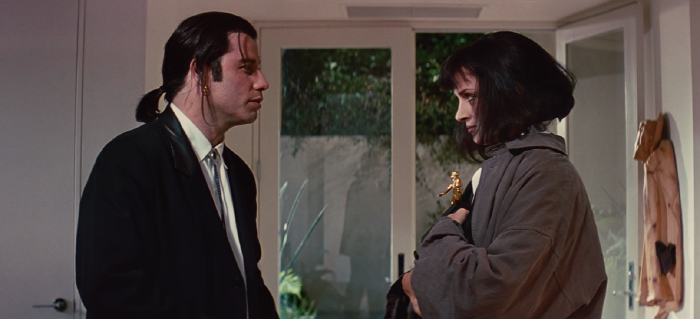As a writer, I know you’ve heard it a thousand times - and I’ve said it often enough: kill your darlings. But is it always necessary?
Here are 5 reasons you should stop killing your darlings:
- There’s a fine line between Tarantino and Mad Max.
- Some stories need slowing down.
- Extra information can be helpful to the reader.
- Substance doesn’t only come from conflict.
- Lean isn’t always better.
You should stop killing your darlings because not every story needs to move at a fast pace, and not every scene or chapter needs to be exciting. Sometimes, the chapters with slower pacing can help readers stay engaged instead of throwing the story at them like it’s a race to The End.

If you’ve been writing for any length of time, no doubt you’ve had this drilled into your head. But in this article, I’ll discuss why your Darlings might need to be saved.
What Does “Killing Your Darlings” Mean?
Kill Your Darlings is a phrase used in fiction writing, and it refers to the parts of the story that you love as an author, but that adds little substance to the story as a whole. The idea behind it is to cut out “filler” and keep the pace of the story moving along.
When editing your work, it can be challenging to cut out scenes and dialogue that you feel bring out a character’s flaws or explain further a specific plot point. However, it is necessary because “filler” is an issue in a lot of writing.
“Filler” could be side plots that don’t relate to the overall story or unnecessary characters that are just…there.
If you were to lose them, the story wouldn’t suffer.
So, why keep them in? Why not kill those darlings if they don’t offer anything more than additional words?
Let’s go over 5 of the reasons you should not kill your darlings.
1. There’s a Fine Line Between Tarantino and Mad Max
If you’ve ever seen a Tarantino movie, you’ll know that they can go from a bloody massacre to a seemingly benign conversation in a matter of seconds.
It’s a little jarring sometimes, and to be honest, I don’t always get it.
Pulp Fiction
Let’s look at Pulp Fiction. Arguably one of his best movies and one I love! But there are a bunch of scenes that some people may look at and think, “This is kinda boring.”
The “Mia Wallace meets Vincent Vega” scene, for example. There’s a LOT of talking. In fact, they have almost 9 minutes straight of talking about nothing important:
https://www.youtube.com/watch?v=O3tGImqhrMo
Now, what would the story have been without it?
Could this scene have been cut and the story gone on just fine?
Could we have seen him pick her up, take her to dinner, dance, and then take her home in a quick montage over just a few minutes?
Of course, (spoiler alert) she goes on to overdose, and we get the infamous needle-in-the-chest scene.
But can we have one without the other?
Reservoir Dogs
Here’s another great Tarantino movie that leans into the dialogue maybe a little too much.
The opening scene is 7 minutes long, during which the characters discuss nothing important or relevant to the plot. We learn that Mr Pink doesn’t believe in tipping.
And…that’s about it.
Watch the full scenes here:
https://www.youtube.com/watch?v=hvFZUOn1TCs
What We Can Learn From Tarantino
I think the idea behind these conversations is that people do, in fact, talk bullsh*t. It’s rare that every conversation we have is perfectly polished and big-screen worthy.
Yes, those men at the table would be shooting the sh*t because, why wouldn’t they be? What else are they going to talk about?
In Pulp Fiction, the Mia-Vincent scene gives us a glimpse into these characters. We learn something about each of them, and it cements Vincent’s reaction when Mia ODs.
Yes, she’s the Boss’s wife, and yes, he’d be in deep trouble if she died. But I also think he liked her, and part of his reaction came from that.
Basically, I don’t think we should always shy away from small talk in our writing because it’s probably the most honest and human part, right?

2. Some Stories Need Slowing Down
Have you ever read a book and had to put it down for a little while because it was all just moving too fast?
Maybe you had a hard time keeping up with all the characters and the action, and you found yourself wishing for a chapter where they all sat down in a diner to talk.
When I wrote my first book, Lightborn - a new adult fantasy - one of my beta readers told me that they felt the story needed to slow down.
In my mind, it flowed well, and I wanted the reader to feel the rush and the tension. But to the reader, it was too rushed.
So, I added a few scenes and dialogue that weren’t 100% needed, but that helped keep the pace at a manageable level.
It’s ok to have some slower chapters in an otherwise fast-paced book.
3. Extra Information Can Be Helpful to the Reader
So, what can you add to these slower chapters?
How about a bit of backstory?
One key thing to remember when writing is that information dumps are the worst. Though you need to include backstory, so things make sense, you don’t want to overwhelm your readers with too much at once.
With that in mind, it’s better to sprinkle little nuggets throughout the story, letting the reader take things in slowly, which should help them to remember everything better.
Another great option is to include a flashback scene that helps to fill in some holes and give your characters a little more substance.
4. Substance Doesn’t Only Come From Conflict
One thing you may have heard when writing fiction is that your work needs conflict.
This doesn’t have to come from a good-guy vs bad-guy scenario all the time, and it doesn’t mean you need car chases and gunfights.
Conflict can be internal and even quiet.
Yes, most works of fiction need to include conflict, but that shouldn’t be what your entire story consists of.
How to Write Fiction with Substance
To write fiction with substance, you need to include characters that are relatable. Even in fantasy or works of sci-fi, readers need to feel a sense of connection with the protagonist. Similarly, it’s essential to make your antagonist believable and not just evil for the sake of the story.
It might not seem doable to write a protagonist that’s relatable when working with fantasy or sci-fi due to the story content. How can anyone relate to an all-powerful wizard or alien?
But let’s take one of my favorite books: The Martian.
The story follows Mark Watney, a NASA astronaut who gets left on Mars when his crew believed him to be dead.
Throughout the book (and subsequent movie), he faces several challenges, from dwindling food to stark loneliness.
You might not think there’s much to relate to with a man on Mars, but the character is so human and so down to earth and likeable. And the things he needs to overcome, though unique to his position, are relatable in a way.
We all face roadblocks while trying to achieve our goals, and we all feel lonely at times. In a way, Watney’s trials are the same as we all feel - only a million times worse.
If you’re looking to add substance to your work without adding more conflict, consider the following:
- Focus on the story, not the future reviews. Don’t add tropes or overly complicated prose just to make yourself sound smarter or placate a few snobby readers.
- Figure out who you’re writing for. Make a profile of your target reader and write only for them. What do they want to see happen?
- Don’t be afraid to make your characters flawed. This includes the protagonist - nobody’s perfect, after all.
- Include scenes of “normalcy.” Use these slower scenes to show your reader who your characters really are.
How to Write Compelling Conflict
You can’t get away without conflict in writing fiction, so it’s important to know how to do it right.
To write compelling conflict, only include that which will help the story move forward. Conflict in fiction should be used to keep your protagonist from reaching their goal, and it can be as big or small as you wish. However, conflict shouldn’t be added just for the sake of it.
When I say not to add conflict “for the sake of it,” I mean: don’t add another sub-plot or outlandish obstacle just because you want to. Don’t use false conflict.
Compelling conflict in popular books includes:
- Prim being chosen for the reaping and Katniss volunteering in her place (The Hunger Games).
- Romeo and Juliet belonging to rival families (Romeo and Juliet).
- Offred fighting Gilead for her and the other handmaid’s lives (The Handmaid’s Tale).
- The star Detective on the hunt for a mysterious killer (most detective novels).
False conflict comes into play when a writer includes a sub-plot or “trope” that is overplayed and unnecessary to the story as a whole.
For example, one popular trope in rom-coms is to have a misunderstanding in the third act to keep the couple apart. This is quickly resolved, and they live happily ever after. Although, it could have been solved right away if they had just had an adult conversation.
5. Lean Isn’t Always Better
Whenever I see people advocating for you to “kill your darlings,” it’s usually accompanied by a note that you can probably cut thousands of “unnecessary” words during edits.
But who decides what’s unnecessary?
Going back to Tarantino for a moment: if you were to cut out all the extra conversations and “unnecessary” speeches, I bet his movies would be half as long.
Editing is a tricky process, and the truth is, it can be challenging to cut out the parts of your story that you love. The key is to find that fine line between cutting to make the story better and cutting because you think you should.

When You Should Kill Your Darlings
I don’t think it’s controversial to say this, but be prepared to hate me:
“More than half of the Ice and Fire Series could easily be cut out, and the story would still be too long.”
I really enjoyed the first book (even though a lot of George R. R. Martin’s work is too sexual and misogynistic). But from there, the series became too convoluted for me.
He introduced way too many new characters and side plots that had zero meaning to the story as a whole, and by the last book, I was exhausted. It’s just too much, and he could have used some serious editing.
Someone just didn’t want to say “no” to their cash cow, and they let through too many darlings that should have been left to go cold on the cutting floor.
If you’ve never read ASOIAF, I’ll just say this:
You should kill your darlings when they are truly uninformative and downright boring. If a scene holds zero substance, provides no insight or explanation into your characters, or if it could be cut out entirely without affecting the story as a whole, then it probably should be removed.